Hickory
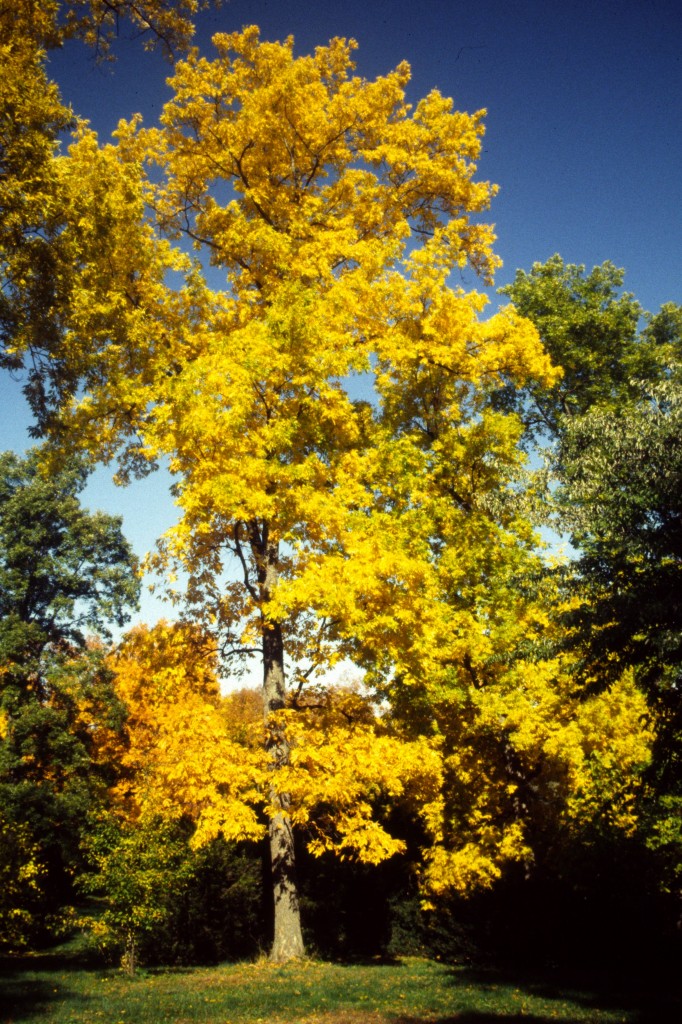
…But owls,
hid in a hickory, will hoot all day,…
– Andrew Hudgins
The word Hickory comes from the Algonquian pohickery or pawhiccorri. Hickories are in the genus Carya, which includes about 18 species of deciduous trees, native to North America and eastern Asia. The genus Carya is part of the walnut family, JUGLANDACEAE, whose members reproduce themselves through nut-like drupes.
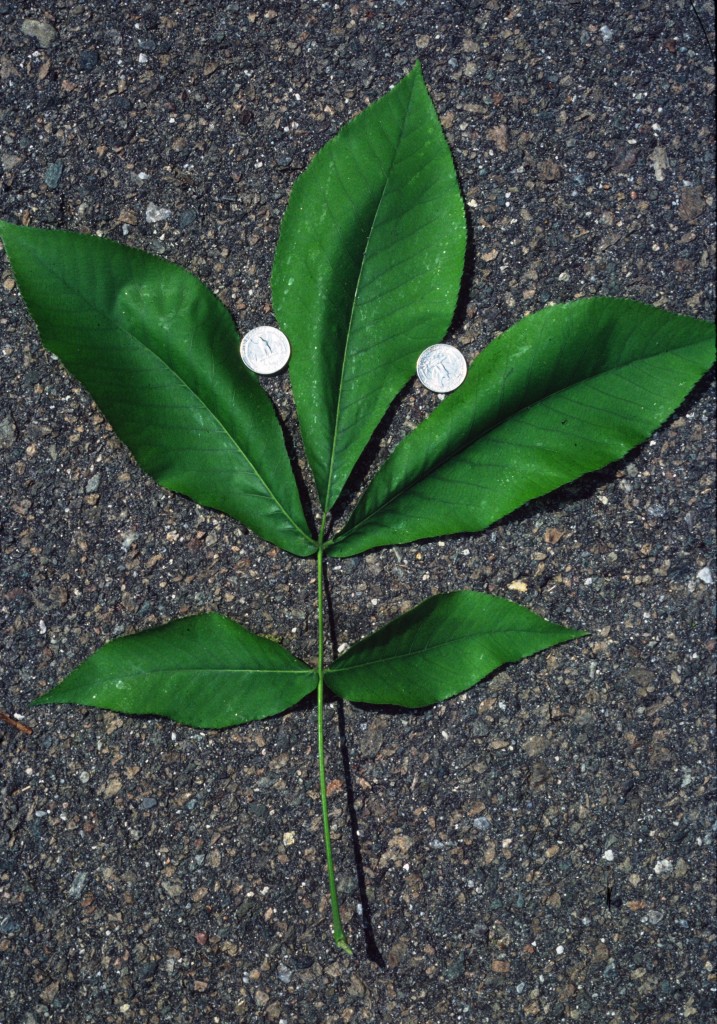
Carya ovata leaf
Hickory leaves are large and compound, with 5 to 17 leaflets (varied by species), each with toothed margins. These leaflets are arranged in twin rows, each row opposite another, with a single odd leaflet at the tip. Hickory wood is strong, hard, and stiff. Historically of high preference for ax handles, this was also prized for wagon parts, such as wheel hubs. Many covered wagons rolled westward, and trotting sulkies won races with hickory hubs. It is still found in modern ax and hammer handles, ladder rungs, golf club shafts, cross-country skis, drum sticks, and deep-sea fishing rods. All hickories are at the top of the list, along with white oak and black locust, of desirable firewood, when comparing heat generated per cord of wood.
There are at least thirty hickories growing at Mount Auburn. A brief survey of several different species includes; Pignut Hickory, Carya glabra, which occurs in mixed oak-hickory woods, from southern New England, west to Illinois and south to Florida and Louisiana. As with all hickories, male flowers are borne on 3-7-inch-long catkins, and inconspicuous, much shorter ¼-inch, female flowers occur on the same tree. If fertilized, the female flowers develop into a pear-shaped, 1-2-inch long nut. These and other hickories have an outer hard husk that splits open revealing a nut with a hard shell. The edible kernel is within the hard shell. As the common name implies, pigs often were released to forage on these nuts. Other wild animals also quickly eat this nut. You may find Pignut Hickories on Harebell Path, Jonquill Path, Wistaria Path, Indian Ridge Path, Hemlock Path and Ivy Path.
Bitternut Hickory, Carya cordiformis, ranges further north, from southern Quebec westward through southern Ontario, Wisconsin and Minnesota and south to Texas, Louisiana, and Georgia. As its common name describes, this nut has a highly acrid, bitter flavor. While squirrels and rabbits will forage on these, its unpalatability helps give it a higher percentage of sprouting in the wild. Look for Bitternut Hickory on Greenbrier Path, Anemone Path and Glen Avenue.
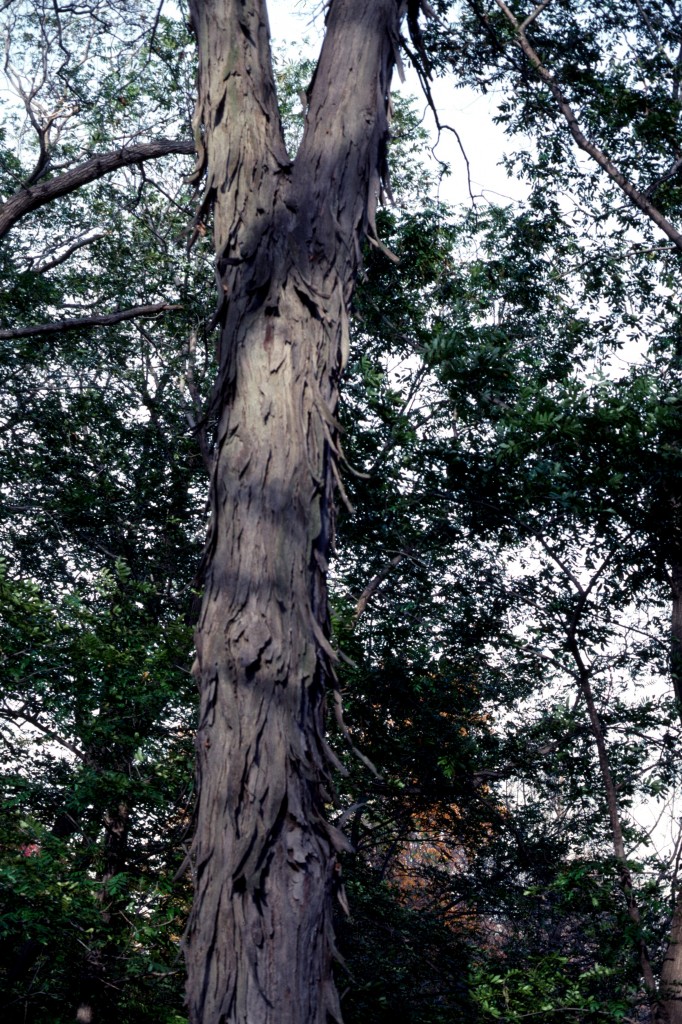
Carya ovata bark
Shagbark Hickory, Carya ovata, can often be identified by the smoke-gray bark curling away from the trunk in long vertical strips. William Bartram (1739-1823) in his classic Travels in North and South Carolina, Georgia, East and West Florida, … wrote, “ The fruit is in great estimation with the Indians. The Creeks store it in their towns. I have seen a hundred bushels of these nuts belonging to one family. They pound them to pieces and then cast them in boiling water, which, after passing through fine strainers, preserves the mostly oily part of the liquid; this they call by a name which signifies hickory milk; it is as sweet and rich as fresh cream, and is an ingredient in most of their cookery, especially homily and corn cakes.”
These nuts are voraciously eaten by squirrels, chipmunks, mice, fox, raccoons, opossums, wild turkeys, mallards and wood ducks. Yellow-bellied sapsuckers frequently tap into these trunks, and brown creepers often hide a nest behind its curling bark. Look for Shagbark Hickories on Arethusa Path, Sumac Path, and Ivy Path.
Laney’s Hickory, Carya x laneyi, is a naturally occurring hybrid between Bitternut Hickory, Carya cordiformis and Shagbark Hickory, Carya ovata. Its nuts are thin-shelled and closer to shagbark then bitternut in sweetness. Laney’s Hickories are growing on Olive Path, Chestnut Avenue and along the Grove Street fence.
…a couple of hickory nuts
roll around as I lift out
the linens,…
– Jane Kenyon
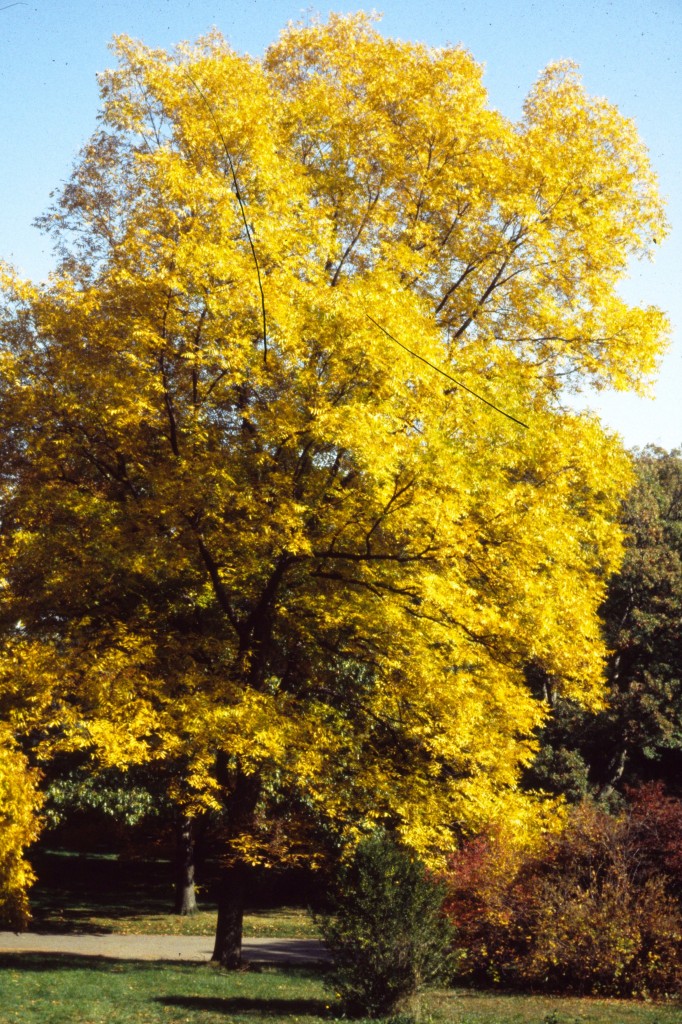
Carya illinoisensis Fall
Pecan, Carya illinoinensis, is the most famous, and oldest cultivated nut tree native to this country. King of the edible hickories, this is native to Texas and the Mississippi River Valley. It was widely known to Native Americans. The word pecan is from the Algonquian pakan or pagan. Thomas Jefferson (1743-1826) planted pecans at Monticello, imported from the Mississippi Valley. Jefferson shared pecans with George Washington (1732-1799), who planted them at Mount Vernon. Colonial ladies’ special dinners might end with shelled pecans.
Native Americans used these extensively as whole or crushed nuts, the aforementioned hickory milk, and on hunting trips as the original trail mix.  A warm weather tree, this fruits best with long hot summers and as with other hickories has a one-to-two-year interval between nut crops. On your next visit to Mount Auburn, look for Pecans on Central Avenue, Oak Avenue, Robin Path, Hibiscus Path, Jasmine Path, Excelsior Path, Andromeda Path, Cosmos path, Rhodora Path and Arborvitae Path.
A warm weather tree, this fruits best with long hot summers and as with other hickories has a one-to-two-year interval between nut crops. On your next visit to Mount Auburn, look for Pecans on Central Avenue, Oak Avenue, Robin Path, Hibiscus Path, Jasmine Path, Excelsior Path, Andromeda Path, Cosmos path, Rhodora Path and Arborvitae Path.
…I remember
shelling the pecans. Nothing but a bucket.
No ride exceptional. Nothing but a dream
to entertain us. I dreamed this moment-…
– Lorna Dee Cervantes
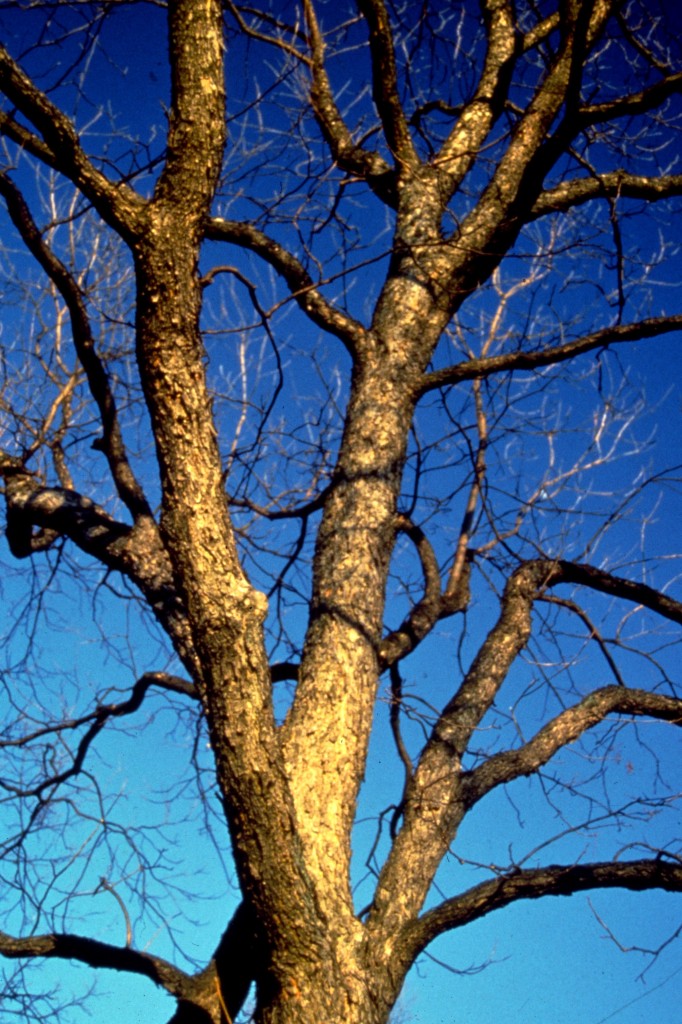
A bare pecan tree
slips a pencil shadow down
a moonlit snow slope.
– Etheridge Knight
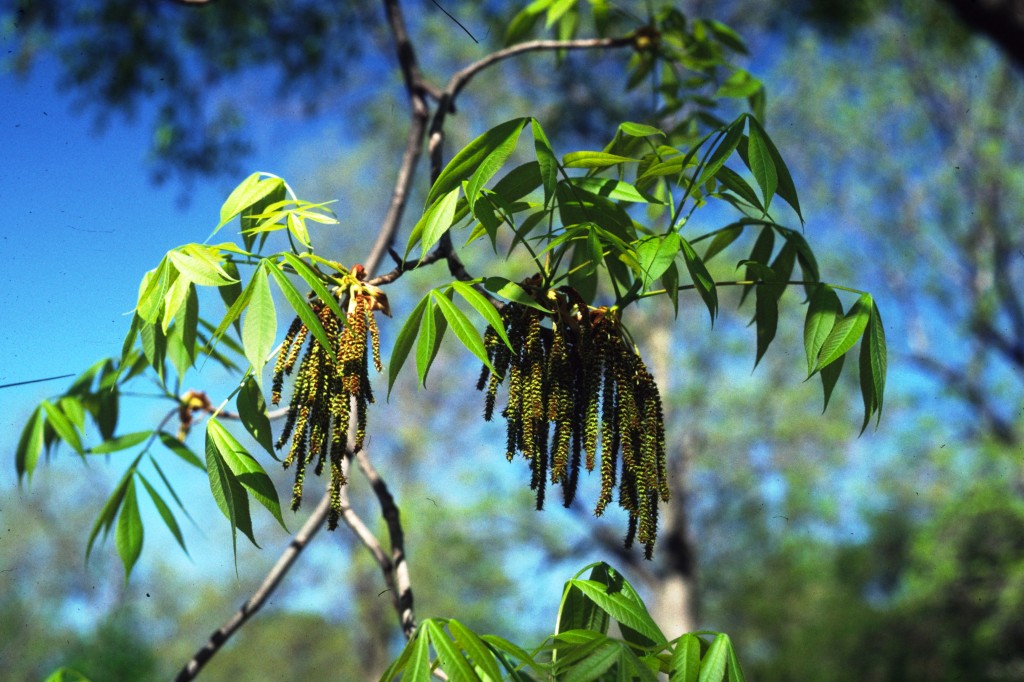
Carya male flower
Through the window screen I can see an angle of gray roof
and the silence that spreads in the branches of the pecan tree
as the sun goes down. I am waiting for a lover. I am alone…
– Minnie Bruce Pratt
Leave a Reply